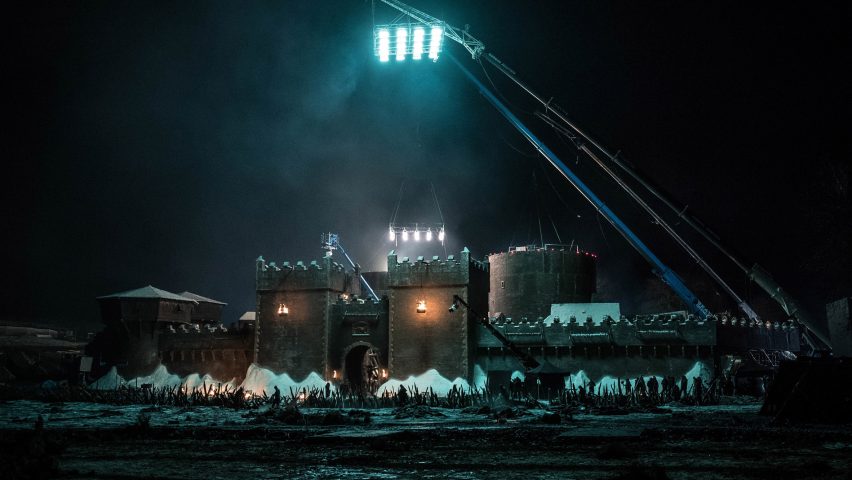
Game of Thrones season eight "was as intense as you can imagine" says production designer
Creating the sets for the final season of fantasy epic Game of Thrones was a "logistical nightmare", says production designer Deborah Riley.
"It was as intense as you can imagine," explained Riley, who worked alongside showrunners David Benioff and Daniel Weiss and directors Miguel Sapochnik and David Nutter.
"I don't want anyone to think this is television by any normal standard. It occupied my every brain cell at every waking moment."
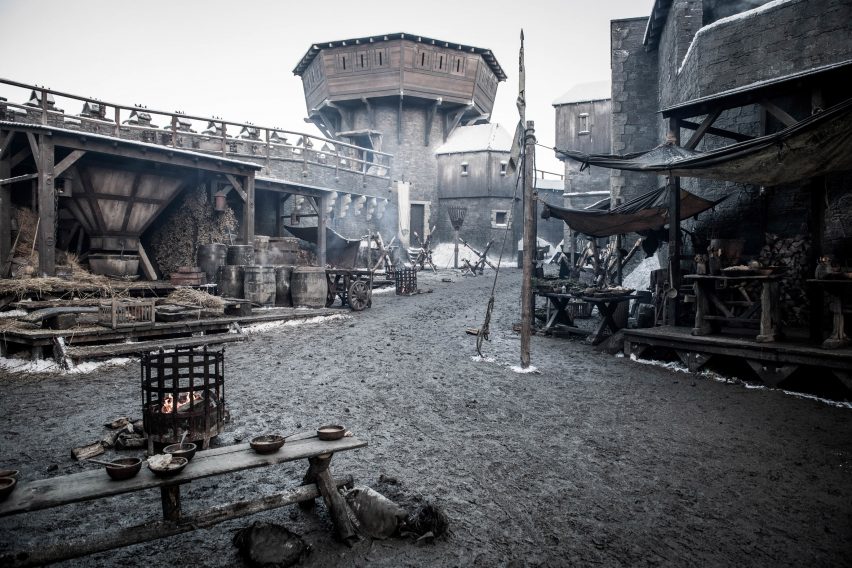
The third episode of the six-episode eighth season, which aired on 28 April, features the longest battle scene ever recorded in television history. The Long Night includes a 90-minute battle epic between the living and the dead Whitewalker army.
Set in and around the fictional Winterfell Castle, the northern stronghold of the Seven Kingdoms, the episode was shot over 55 consecutive nights in the village of Toome, Northern Ireland.
"We were exhausted. What you see on camera was reflected in everybody," Riley told Dezeen. "It wasn't just the characters going through it but the crew too. It makes me sick to my stomach to think of what it was like for us at the time."
"Mud would go up past your ankles"
Riley, who has worked on Game of Thrones since season four, said the biggest challenge of the episode was building a set that could withstand the boggy ground in the area, which has been the set location for Winterfell Castle since season one.
"It was a logistical nightmare. The very ground that Winterfell was built on was not conducive to what really needed to be done," she said.
"The amount of rain in Belfast and the lay of the land where Winterfell was originally built meant that mud would go up past your ankles."
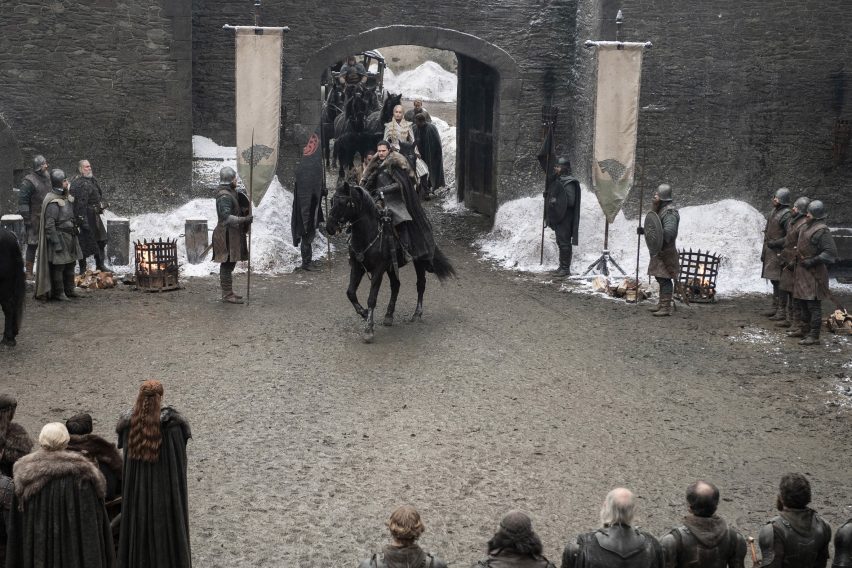
Crew members dug out the circular trench used by the living army to defend themselves against the Whitewalkers. A drainage system was also built from scratch to avoid the set from waterlogging.
"We had never done anything as intense as that before, working over a long period of time and in difficult conditions," said Riley. "I'd never worked with that much heavy machinery before. At one point in time, it felt like we had every piece of heavy equipment in Northern Ireland out in Winterfell!"
The small flakes of paper used to emulate snow also had to be scraped away regularly to avoid the set "turning into papier-mâché".
"It takes an army of people to do that and they're not the people who get any of the glory at all. It was a phenomenal achievement."
Making Winterfell Castle a "worthy stronghold"
To make Winterfell Castle believable as a "worthy stronghold", an entire exterior was constructed using plywood backing and hard plaster.
"We wanted to show parts of Winterfell that had never been explored before and also create big, strong outer walls that, for all intents and purposes, would feel like the castle was fortified. This was so it would feel like a battle in the true sense," said Riley.
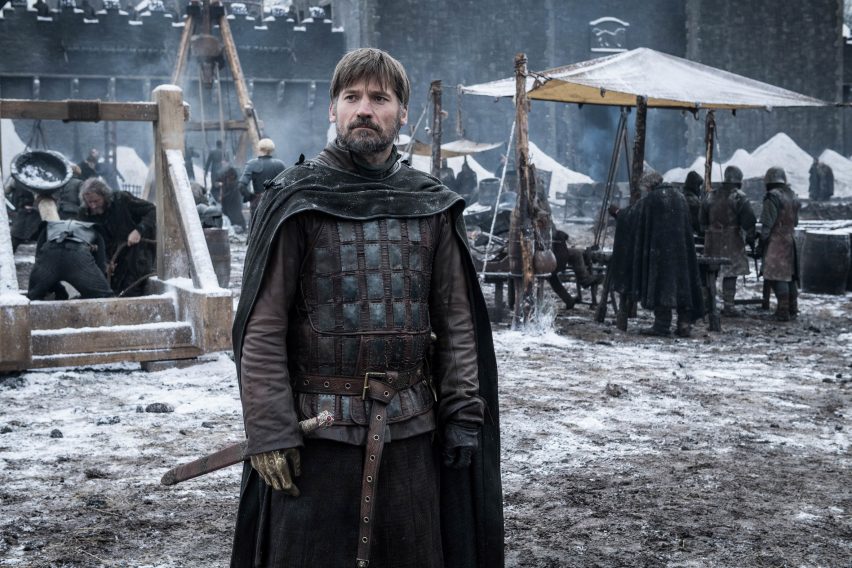
Riley's aim was to "humanise" the building by showing parts unseen in previous seasons, like the bakehouse and the soup kitchen.
"It was a matter of expanding the castle we already had, but expanding it in a way that had never been established before," said Riley.
"You want to feel for those characters, you want to understand who they are and you want to see that they're vulnerable."
More dead bodies than ever before
Another challenge was handling the extensive number of dead bodies needed as props.
"Not only do you need the dead people but the armour that goes with them," said Riley.
"We'd done a couple of battles before so we had a lot of prop dead bodies and dead horses but nowhere near the amount that we needed for season eight," she explained. "We had a whole team of people just clothing these bodies and making them look like they'd endured a battle."
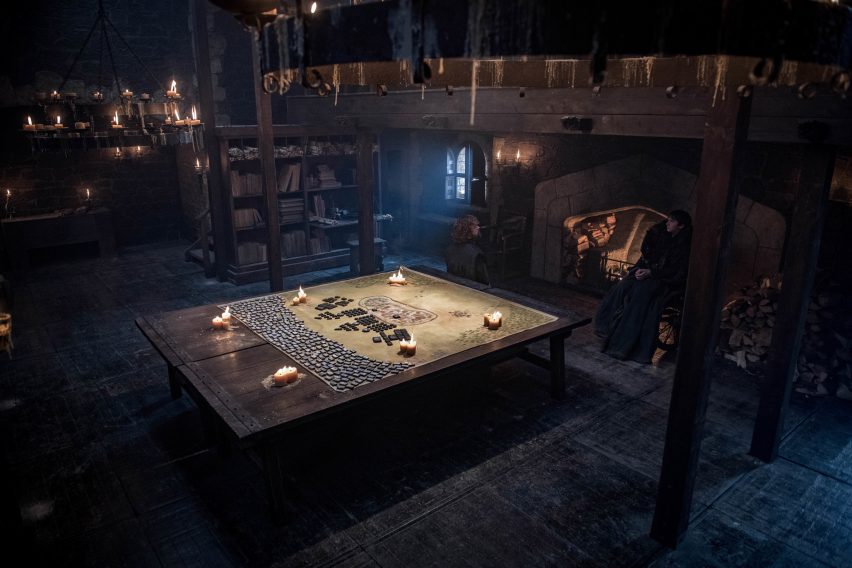
The team also created casts for groups of dead bodies, which were used in the background for wider shots.
"If we were to show dead people across the camera, the further away we went, the less detail they needed," said the designer. "We cast three or four bodies together so we'd have clumps of bodies that we could lift around very easily."
Fake blood also created issues over the length of the shoot.
"You can't leave that during the day for the various reactions it would have – the water, the snow and other things would turn a bright pinky orange colour," said Riley. "It sounds so simple but it was initially a real stumbling block."
"It was a fantastic thing to be involved in but none of it was fun," the designer concluded. "I was very proud to have survived."
The next episode of Game of Thrones airs 5 May on HBO.
Read on for an edited version of the interview transcript:
Gunseli Yalcinkaya: Thanks for taking the time to speak to me. Can you begin by outlining your role on Game of Thrones?
Deborah Riley: I am head of the art department, which means that the first thing I'm concerned with and have access to are the outlines and the script, and then from that point onwards. I answer to the showrunners David Benioff and Daniel Weiss and directors Miguel Sapochnik and David Nutter.
The show has phenomenal writing with phenomenal characters and in order to help them tell the best story possible, we wanted to provide them with a realistic setting that would allow an audience to believe in dragons.
Gunseli Yalcinkaya: How long did this season take to prepare?
Deborah Riley: It was a full year's work for me, from pre-production all the way through to when I finished in July last year. It's never an easy thing to do and this was incredibly time-consuming. It occupied my every brain cell, every waking moment.
It was as intense as you can imagine. I don't want anyone to think this is television by any normal standard. It's really, really difficult and time-consuming.
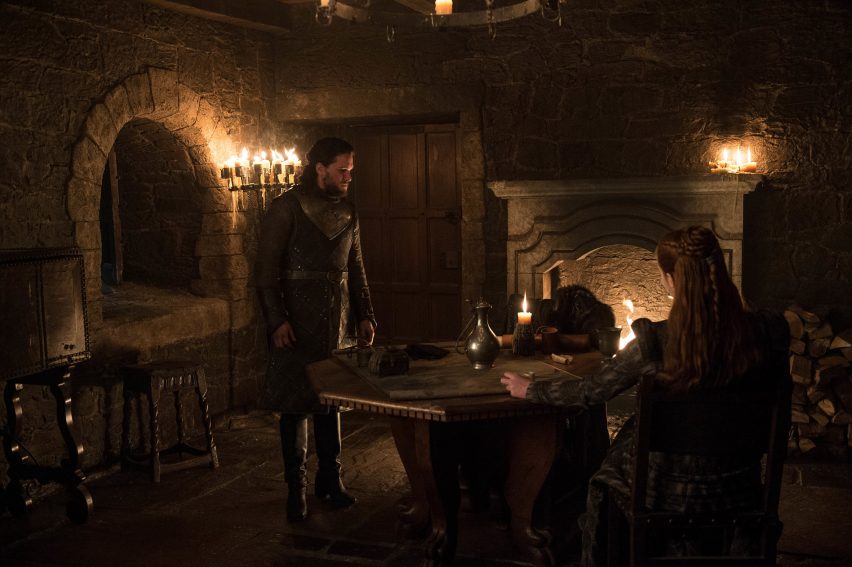
Gunseli Yalcinkaya: What a gargantuan undertaking. Where do you even begin?
Deborah Riley: The first thing for us to do for season eight was to figure out how to shoot all these battles, what we would need to provide for that to happen. This required us to work out a strategy for shooting: how much visual effects did they have to use?
Gunseli Yalcinkaya: What about Winterfell Castle?
Deborah Riley: For Winterfell, we built the entire castle so the camera could be anywhere at any time. There was too much action, too much going on for them to be concerned about doing any rotoscope work later. All of the shots inside the castle are for real.
Gunseli Yalcinkaya: What was it made of?
Deborah Riley: It was a set so it was built with plywood backings and a hard plaster finish to help it survive the rain and the weather in Belfast. We were shooting in winter too, so that was a very big ask of the set.
We had to level the ground outside to prepare for the massive area for the battlefield itself. There was a huge amount of groundwork involved.
Gunseli Yalcinkaya: Was the castle divided into rooms?
Deborah Riley: No. It didn't work like that at all. Even if it did, there would be too many to count. By the time we finished, there was a massive interior composite built in Linen Mill Studios in Banbridge, Belfast. We had a massive composite of interiors, which you can see Ayra running through in episode three.
Gunseli Yalcinkaya: What were your visual cues when designing Winterfell Castle? Obviously, it had featured in previous seasons.
Deborah Riley: You can't have something that doesn't feel like what it was before. It was a matter of expanding the castle we already had, but expanding it in a way that had never been established before.
I was really interested in humanising Winterfell, showing the back of house so we could have a better understanding of where the food came from, where the bread was made, and so on, so we could have a better idea of how they had been feeding these armies and how they'd been keeping the castle alive.
Gunseli Yalcinkaya: It's interesting you speak of humanising the castle. Why was that important?
Deborah Riley: You want to feel for those characters, you want to understand who they are and you want to see that they're vulnerable, and the spaces have to reflect that too.
We wanted to show parts of Winterfell that had never been explored before and give them big, strong outer walls so, for all intents and purposes, would feel like the castle was fortified.
This was so it would feel like a battle in the true sense, meaning that there were obstacles the Wights would have to overcome in order to penetrate the castle.
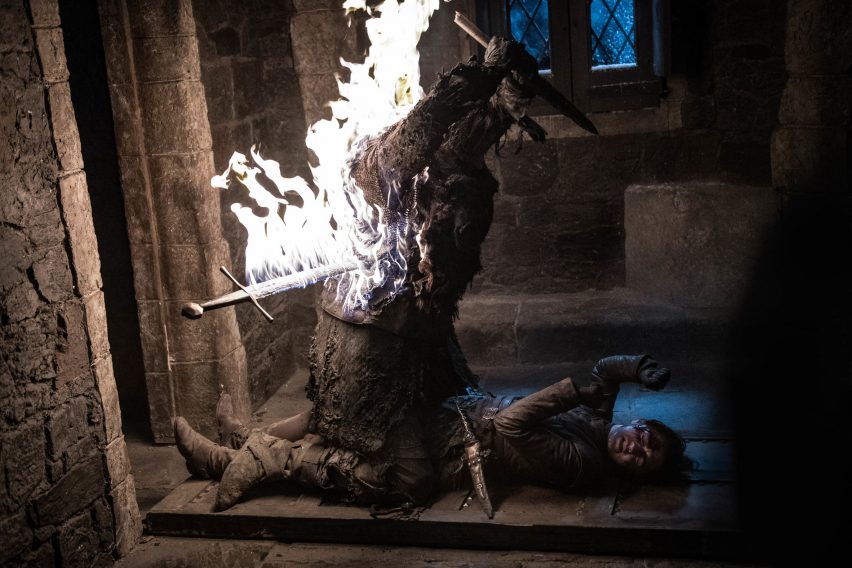
Gunseli Yalcinkaya: What was the biggest challenge of season three's great battle?
Deborah Riley: Working out logistically how it would work. It all starts out as words on a page but there's so much to imagine, so much to resolve. There was a lot of work going into just the logistics of it. How can we build a set that can support continuous shooting for so many nights that we would be able to create these massive battle scenes?
It was a logistical nightmare. The very ground that Winterfell was built on was not conducive to what really needed to be done.
Winterfell is actually a very marshy ground, so there was a lot of groundwork going in and we had to build these extraordinary mechanisms to make sure the set could survive long enough that it could withstand all of the pressures it was going to be put through.
The amount of rain in Belfast and the lay of the land where Winterfell was originally built meant that mud would go up past your ankles.
Obviously, when the positions for the sets were chosen in season one, they didn't realise what would be coming. Had we had known, I'm sure they would have chosen a different location for it. But as always, had we known sooner, we would have been much more sensible when choosing a place to accommodate a battle but because that wasn't the case, it required a lot of work from locations.
Gunseli Yalcinkaya: I can imagine building the trench was hard work given the weather conditions.
Deborah Riley: We dug that trench but it kept filling with water so had to keep being dug out again. The very ground that Winterfell was built on was not conducive to what really needed to be done. It had to feel like a worthy stronghold.
Gunseli Yalcinkaya: What restraints did you use? Like floorboards?
Deborah Riley: No, it was literally scraping back the ground to create proper drainage on the property where there hadn't been before. Logistically, there was so much involved and it required everyone to work beyond anything we'd done before.
Gunseli Yalcinkaya: It sound like as much of a battle backstage as onstage?
Deborah Riley: The crew are absolutely unsung heroes. None of those prop dead people get there by themselves and it's because there's a crew standing right besides them the whole time.
Gunseli Yalcinkaya: And all that snow must have been a nightmare?
Deborah Riley: That's paper that turns to papier-mâché when it gets wet so we'd have to scrape all of it. It takes an army of people to do that and they're not the people who get any of the glory at all. It was a phenomenal achievement.
Gunseli Yalcinkaya: What about the weaponry?
Deborah Riley: We had to make everything look like it'd been made of dragon glass. We had to make it look like the army's weapons had been adapted with dragon glass. You can see that the Unsullied have adapted their shields to include dragon glass that had been clamped and screwed onto them.
The dragon glass weaponry is all provided by our armoury team, headed by Tommy Dunne.
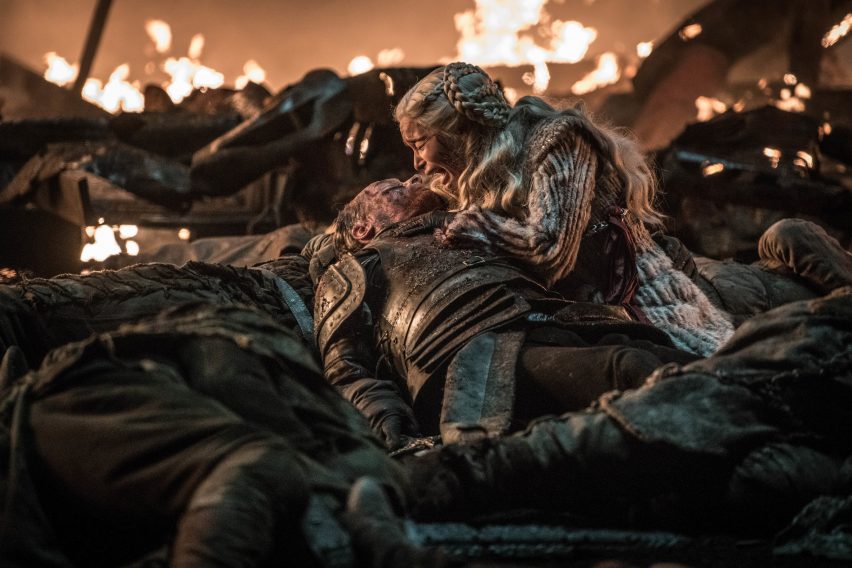
Gunseli Yalcinkaya: What is the dragon glass actually made of?
Deborah Riley: The fake props were actually bitumen, which stank, to be honest. It just smelt like roadworks. It had the look of obsidian with the cheapest budget possible.
Gunseli Yalcinkaya: What about all the dead people?
Deborah Riley: Not only do you need the dead people but the armour that goes with them. This was a massive budgetary issue as we had to clothe each one in the appropriate army uniforms
We also had discs of dead bodies made. We were casting out dead bodies ourselves to try to increase the look of it and to make the battlefield look like it had so many dead people across it.
If we were to show dead people across the camera, the further away we went, the less detail they needed. We cast three of four bodies together so we'd have clumps of bodies that we could lift around very easily but anything close to camera were individual bodies that would fill with water when it rained, making them very heavy.
We'd done a couple of battles before so we had a lot of prop dead bodies and dead horses but nowhere near the amount that we needed for season eight. We had a whole team of people just clothing these bodies and making them look like they'd endured a battle – to put wigs on them and helmets.
There's also a whole team of people that had to look after these bodies after the shoot because you can't have them laying in the field overnight. You have to bring them in, take them out of the weather, otherwise, they won't last.
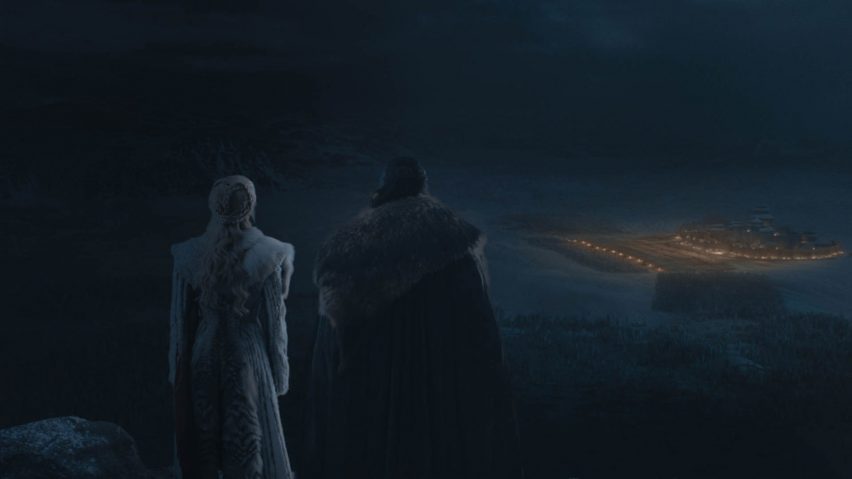
Gunseli Yalcinkaya: What about the blood?
Deborah Riley: The blood, the blood! Prop blood is very expensive, and then there are various types of it. We experimented with these to see which blood we could use for the close-up shots. Again, you can't leave that during the day for the various reactions it would have – the water, the snow and other things would turn a bright pinky orange colour. It sounds so simple but it was initially a real stumbling block to work it all out.
There's different blood you can buy for different prices but with the amount we had to use, we had to be measured with the expensive blood and be careful with what blood we were putting where.
We had never done anything as intense as that before, working over a long period of time and in difficult conditions. I'd never worked with that much heavy machinery before. At one point in time, it felt like we had every piece of heavy equipment in Northern Ireland out in Winterfell!"
Gunseli Yalcinkaya: What would you do differently?
Deborah Riley: We had too much work to do in the time that we had. It was at the point where even getting more people didn't help because you'd need people with a certain skill, a certain amount of work to happen in a limited space. There comes a point where you're not working efficiently if you're crowding.
We were exhausted. What you see on camera was reflected in everybody. It wasn't just the characters going through it but the crew too. It makes me sick to my stomach to think of what it was like for us at the time
Gunseli Yalcinkaya: Was it enjoyable?
It was a fantastic thing to be involved in but none of it was fun. We did the best we possibly could given the time that we had and that was a huge achievement in itself. I was very proud to have survived.
We didn't quite know what we were getting into until we were knee-deep in mud, it was really hard work.
When it's something like a battle sequence, it's important to convey that it's not only the people in front of the camera conveying that, it's a whole team.
Gunseli Yalcinkaya: Would you do it again?
Deborah Riley: Oh god yeah, I think we would all do it again if we had the chance. It was a real honour to be a part of Game of Thrones, but I would know better what I was getting myself into, that's for sure.
The work you see on camera is exactly how it was, and that's what it was for everyone.